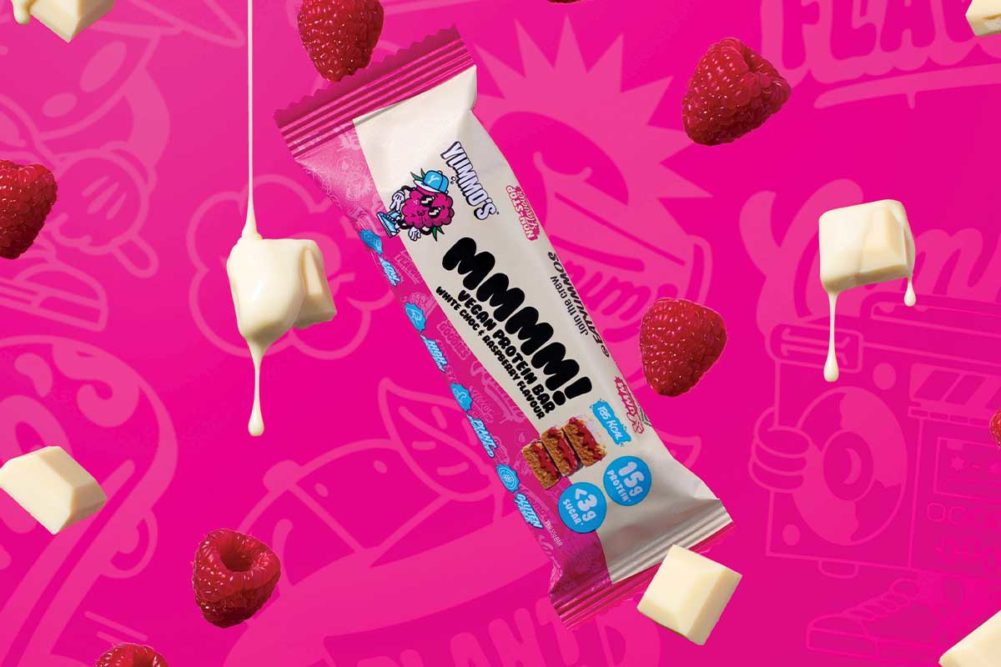Other benefits of protein fortification revolve around label appeal. Pea protein, for example, is a great choice when bakers want to keep allergens off their product labels.
Cargill’s portfolio includes soy flour, pea protein and vital wheat gluten. Soy flour is one of the few plant proteins considered a complete protein, meaning it contains all the essential amino acids that the body requires.
“Vital wheat gluten is well established in the bakery space,” said Aaron Reed, senior food technologist, Cargill. “While most often associated with its functional benefits, it can help meet nutritional goals, too. With 75% protein on a dry matter basis, a small amount can boost the protein content of breads and other baked goods. Pea protein sports strong nutritional credentials, with a minimum 80% protein and a high PDCAAS of 0.78. Paired with a complementary protein source, such as rice, wheat gluten or soy, it’s easy to achieve a complete protein claim.”
Cargill developed a brownie recipe that packs in 7 grams of protein per 40-gram serving.
“To accomplish this feat, we carefully blended our three botanical protein sources, keeping inclusion levels low for each individual botanical protein source to minimize off flavors,” Mr. Reed said. “Protein-fortified chocolate inclusions or coatings can also help brands achieve protein claims in baked goods. With this approach, brands can replace some of the flour in a recipe with pea protein, then add a protein-fortified chocolate inclusion or coating to further bolster protein levels.”
Ingredion Inc. offers pulse protein ingredients sourced from yellow peas, lentils, fava beans and chickpeas. Protein content ranges from 10% to 84%, depending upon the source and the extraction method.
“We are currently investigating the combination of proteins to improve protein quality and functionality, particularly in extruded snacks and baked goods,” said Daniel Kennedy, director, platform and business development for plant-based protein at Ingredion. “Pulse proteins can have protein qualities that are less than soy, meat or dairy, so we are using artificial intelligence to find better combinations that will improve PDCAAS scores and also missing functionality in things like gluten-free baking.”
Beans and pulses can be used in a wide range of applications in both the bakery and snack categories.
“Beans and pulses can also help deliver interesting visual appeal and can enhance the flavor in chips, snacks, bars and artisanal breads,” said Jeff Hodges, manager, bakery, snacks and confections applications, ADM. “Beans and pulses are also nutrition powerhouses, further supporting better-for-you bakery formulations.”
Chickpeas are showing more prominence in the market. They are gaining traction in keto-friendly bakery offerings and snacks, as well as pizza crusts.
Nut flours, particularly those from almonds, add important nutrients to baked foods, including fiber, protein, magnesium and vitamin E. Bakers can leverage these benefits to promote the enriched nutritional content of gluten-free baked products.
“As a result of this fortification, consumers can feel better about their choices knowing that gluten-free options might offer additional health benefits,” said Stephanie Doan, manager of product innovation, Blue Diamond Global Ingredients Division.
Nutrient content is not the only advantage of nut flours. Many will provide taste and visual appeal.
Ofi’s range of nut protein powders designed for baked foods are made by cold-pressing raw, whole or blanched nuts. The blanched almond protein powder has about 39% protein content, while the cashew protein powder is about 28% protein. This is a noteworthy increase compared to traditional wheat flour, which tends to hover around 10%.
“On the horizon, we will see emerging plant protein sources like algae, sunflower, lupin, chickpea and ancient grains, including amaranth and sorghum,” said Leticia Goncalves, president of global foods for ADM. “However, these sources don’t have mainstream awareness, and it will take time for them to gain the same general consumer recognition as conventional sources like soy, wheat and pea.”
The Protein Brewery has developed a fermentation-derived ingredient that can be used in place of traditional wheat flour in various baked foods. It consists of 45% protein with all the essential amino acids and is 35% to 39% fiber. Specifically, it is a concentrated source of beta-glucan fiber, which has been shown to support a healthy immune system.
“Its bland, neutral flavor allows for easy incorporation into better-for-you bakery products, such as cookies, muffins, pancakes and tortilla wraps, without negatively affecting texture,” said Deb Anderson, director of new business development, The Protein Brewery. “In most baking applications, we can easily substitute 15% to 25% of the wheat flour for our fermentation-derived whole food ingredient. Our ingredient has a water-holding capacity of three times its weight in water; therefore, it is necessary to ensure there is enough moisture in the recipe to fully hydrate all the ingredients.”
The future of plant protein-fortified baked foods is promising. Blends of proteins will fuel innovation.
ADM Outside Voice research showed that 69% of plant protein consumers in the United States say that protein quality is important and/or very important to purchasing decisions of plant-based products. Sixty-three percent say the same for nutrient density and 49% for protein diversity.
“Interest in protein fortification continues to show an upward trend among consumers, particularly as many people seek out expanded protein options and sources,” Mr. Hodges concluded. “With this increased focus on protein quality, ingredient diversity and nutrition, we foresee a variety of new bakery and snack item launches packed with plant proteins and wholesome ingredients that support consumers’ pursuit to purposefully indulge through tasty, better-for-you treats.”
This article is an excerpt from the February 2023 issue of Baking & Snack. To read the entire feature on Plant-Based Protein, click here.





